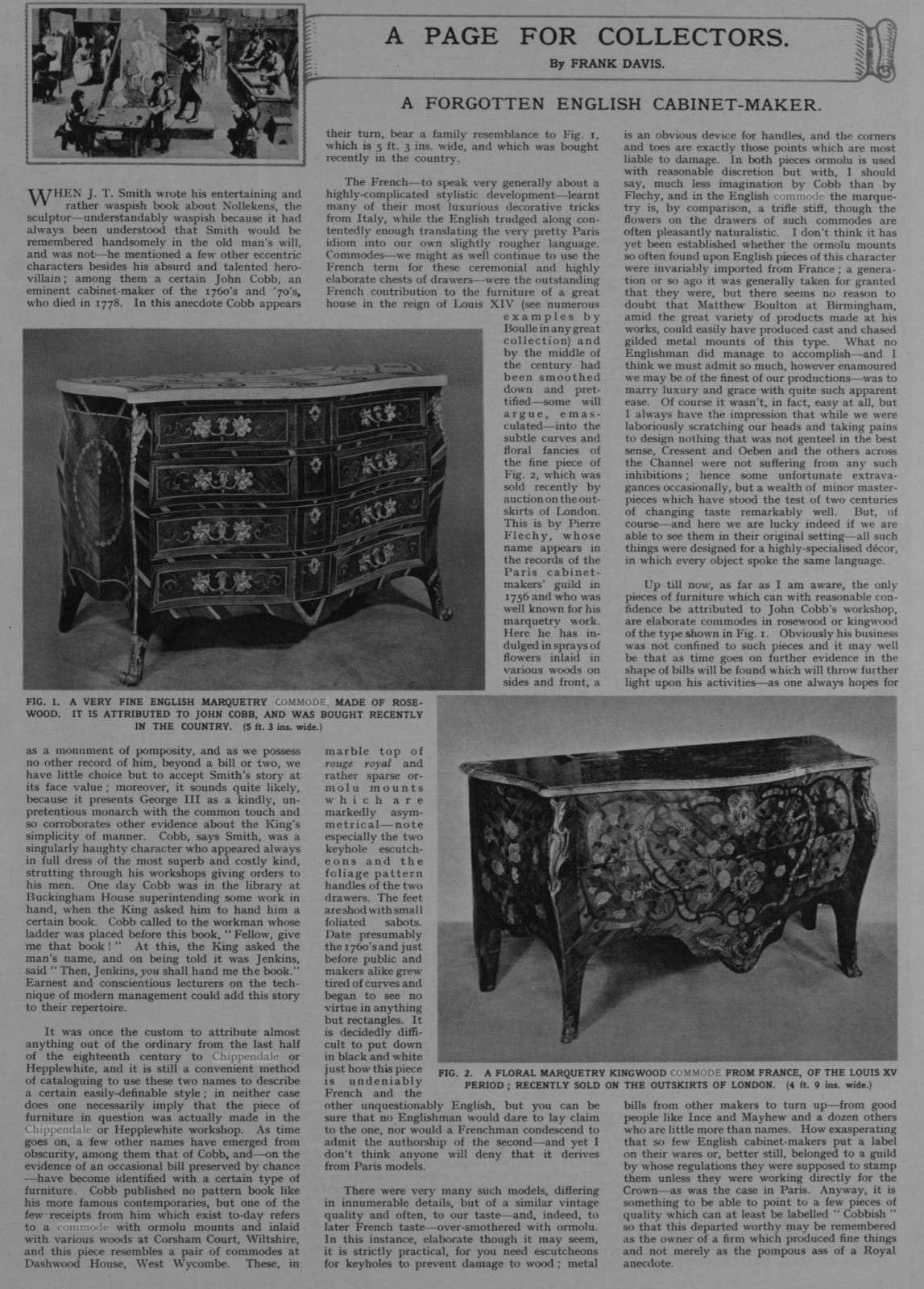A GEORGE III MARQUETRY COMMODE ATTRIBUTED TO PIERRE LANGLOIS
W: 157cm / 62"
D: 63cm / 24”
Further images
-
(View a larger image of thumbnail 1
)
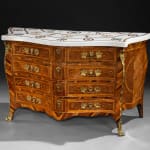
-
(View a larger image of thumbnail 2
)

-
(View a larger image of thumbnail 3
)
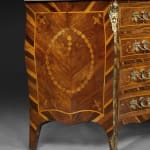
-
(View a larger image of thumbnail 4
)
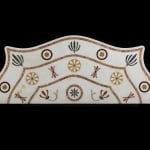
-
(View a larger image of thumbnail 5
)

-
(View a larger image of thumbnail 6
)

-
(View a larger image of thumbnail 7
)
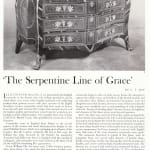
-
(View a larger image of thumbnail 8
)
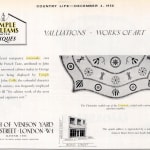
-
(View a larger image of thumbnail 9
)
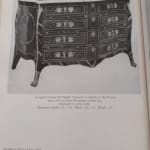
Provenance
Temple Williams Ltd., 1958
Frank Partridge Ltd., before 1968
The Collection of Lord & Lady Weinstock
Exhibitions
Temple Williams, The Grosvenor House Art & Antiques Fair, London, 1959Literature
Rieder, W., ‘More on Pierre Langlois’, The Connoisseur, September 1974, pp. 11-13
Thornton, P. & Rieder, W., ‘Pierre Langlois, Ébéniste. Parts 1-5’, The Connoisseur, December 1971, pp. 283-288; February 1972, pp. 105-112; March 1972, pp. 176-187; April 1972, pp. 260-262, fig. 15; and May 1972, pp. 30-35
Wood, L., ‘New Light on Pierre Langlois (1718-67)’, The Furniture History Soc. Newsletter, No. 196, Nov. 2014
Publications
Coleridge, A., Chippendale Furniture (London: 1968), p. 35, pl. 47
Davis, F., ‘A Page for Collectors: A Forgotten English Cabinet-Maker’, Illustrated London News, 3rd Jan. 1959
Joy, E. T., ‘The Serpentine Line of Grace’, The Connoisseur, Antique Dealers Fair Souvenir Ed., 1959, pp. 72-74
Temple Williams Limited Antiques, Advertisement, Country Life, 4th Dec. 1958
Temple Williams LTD, The Grosvenor House Handbook (London, 1959), p. 96
Commodes executed in the French taste - with serpentine lines, abundant carving and ormolu mounts - were highly popular in England during the 1750s and 60s. Yet leading cabinet-makers at this time did not produce furniture with marquetry. As far as is known from datable furniture, Chippendale, like other English makers, did not adopt marquetry until about 1770.
The fine naturalistic floral marquetry of this commode made slightly before this date points therefore to the hand of Pierre Langlois, a London-born craftsman of Huguenot descent. It is of a type that, new in Paris in 1750, he introduced into England during the 1760s and became famous for. The Seven Years’ War of 1756-63 greatly affected the import of styles from France with the result that Langlois, who trained in Paris in the 1740s in the workshop of Jean-François Oeben, established this style of marquetry in the late 1750s and early 1760s in England with little competition from France or English cabinet-makers.1
Examples of pre circa 1770 floral marquetry furniture attributable to English makers do survive, but they differ in significant ways from Langlois’ work. The 1759-1763 flower and ribbon marquetry bureau en pente at Chewton House, Somerset, for example, features designs inlaid on a light-coloured ground as contrasted to the scorching, strong tonal contrasts and mahogany or rosewood ground which characterise Langlois’ work, as seen on the present commode which features a dark rosewood ground.2
Similarly, a hallmark of Langlois’ work is the use of diagonal linear striping to form pronounced geometric patterns on the front, sides and top (when of wood) to form the ground for or frame panels of marquetry, as exemplified by this commode.
The marquetry motifs themselves also suggest Langlois. Langlois had a penchant (unlikely to be felt by an English maker) for placing fleur-de-lys at the corners of his marquetry panels. This is a feature of nearly all his work, absent only on articles whose plain style does not permit decoration, and duly the flowers are present in the four corners of the panels on the sides of this commode, as well as on the drawer fronts beneath the escutcheons.
The commode’s pronounced ormolu scroll toe mounts closely resemble those on Langlois’ documented commodes produced for the Duke of Bedford for Woburn Abbey in 1760 and the Earl of Coventry for Croome Court in 1764, and his attributed work for Sir Lawrence Dundas and John Chute and in the Royal Collection. Its curvilinear form, likely introduced to England by Langlois, evokes the shape of these commodes and with its curved back-edge is French in character and unlike the straight vertical edge usually found on English furniture.
Combining both Rococo and Neoclassical elements, the commode was likely made during the period of stylistic transition between 1765 and 1770. Indeed, Svend Eriksen has commented that the degree, which is more significant than in the present example, of Neoclassicism in the commode, signed Daniel Langlois (Pierre’s son), in the Fitzwilliam Museum, Cambridge, and the pair at Woburn Abbey, Bedfordshire, suggests a date of no earlier than 1770, supporting a date of 1765-70 commode which is more rococo in design.
The commode is also finished with a black-washed double-panelled back typical of Langlois’ cabinet-making and the interior work too is characteristically neat. The top, being of marble rather than wood, also implies Langlois, the idea of a marble, rather than wooden top, being an entirely French concept and not a design English cabinet-makers executed or evidently considered in the 1760s.
The top is especially spectacular. The serpentine white marble is inlaid with bands of Spanish brocatelle and anthemia and floral roundels of giallo, rouge griotte and vert de mer.
The present commode has been profusely illustrated.3
1 For Langlois’ background, see Wood, L., ‘New Light on Pierre Langlois (1718-67)’, The Furniture History Society Newsletter, No. 196, Nov. 2014
2 For more on Langlois ouvre, see Thornton, P. & Rieder, W., ‘Pierre Langlois, Ébéniste. Parts 1-5’, The Connoisseur, December 1971, pp. 283-88; February 1972, pp. 105-12; March 1972, pp. 176-87; April 1972, pp. 260-62, fig. 15; May 1972, pp. 30-35; and Rieder, W., ‘More on Pierre Langlois’, The Connoisseur, September 1974, pp. 11-13
3 See Coleridge, A., Chippendale Furniture (London: 1968), p. 35, pl. 47; F. Davis, ‘A Page for Collectors: A Forgotten English Cabinet-Maker’, Illustrated London News, 3rd Jan. 1959; E. T. Joy, ‘The Serpentine Line of Grace’, The Connoisseur, Antique Dealers Fair Souvenir Ed., 1959, pp. 72-74; Temple Williams Limited Antiques, Advertisement, Country Life, 4th Dec. 1958; Temple Williams LTD, The Grosvenor House Handbook (London, 1959), p. 96
The commode is veneered and inlaid with laburnum, Brazilian rosewood, fustic and amaranth. The serpentine white marble top is inlaid with bands of Spanish brocatelle and anthemia and floral roundels of giallo, rouge griotte, and vert de mer. The four crossbanded drawers are inlaid with foliate scrolls, mounted with foliate ormolu handles and centred by cartouche escutcheons above inlaid fleur-de-lys, and the sides panels are inlaid with fleur-de-lys to each corner and centred by a ribbon-tied husk wreath, above a shaped apron. They are flanked by keeled stiles headed by rocaille mounts and chutes terminating in outswept feet mounted with scroll toes.





